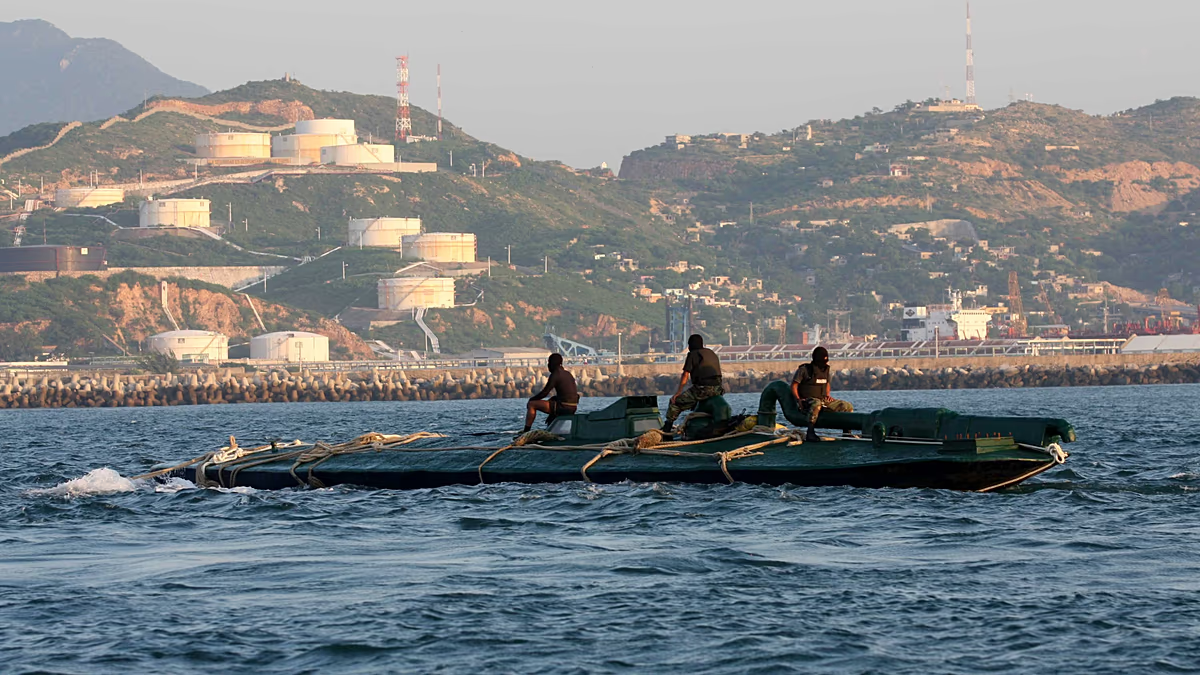In a significant law enforcement operation, Portuguese authorities intercepted a sophisticated narco-submarine laden with over 1.7 tonnes of cocaine while navigating the Atlantic Ocean. This operation, which involved collaboration with various international agencies including those from the UK and the US, is seen as a considerable setback for transnational drug trafficking networks. The semi-submersible vessel, designed for stealth, was intercepted as it was heading to several European nations, though authorities withheld specific details regarding its origin and the nationalities of the crew members on board.
| Article Subheadings |
|---|
| 1) Overview of the Operation |
| 2) International Collaboration |
| 3) Method of Operation |
| 4) Growing Trends in Drug Trafficking |
| 5) Implications for European Security |
Overview of the Operation
The operation, named El Dorado, culminated in the interception of a semi-submersible vessel transporting a substantial amount of cocaine. Onboard were four crew members, whose identities remain undisclosed as investigations continue. The operation unfolded with a meticulous plan and precise execution by the Portuguese authorities, who worked closely with a variety of international law enforcement agencies to successfully halt the vessel’s journey across the Atlantic. The seizure is particularly notable due to the large quantity of narcotics involved, which has the potential to supply a vast market in Europe.
International Collaboration
The operation demonstrated significant cooperation among various national agencies. The Portuguese Judicial Police led the intervention, but they were supported by multiple foreign agencies, including the UK National Crime Agency and the US Drug Enforcement Agency. This collaborative effort emphasizes the interconnected nature of modern drug trafficking and the need for international partnerships in combating it. Additionally, the Joint Interagency Task Force South played a crucial role in providing intelligence that informed the operation. The engagement of international allies illustrates a unified front against drug trafficking and a commitment to global security.
Method of Operation
The intercepted semi-submersible vessel was equipped with the capability to navigate partially submerged to evade detection. These vessels are increasingly favored by drug cartels as they offer a stealthy means of transporting large shipments of cocaine from South America to Europe. Operatives utilize these crafts to minimize visibility on maritime radar systems, thereby complicating the challenges faced by law enforcement agencies. The method of operation poses significant hurdles for authorities as they work to enhance their detection and interdiction measures against such advanced strategies employed by traffickers.
Growing Trends in Drug Trafficking
The Atlantic crossing remains a prominent route for narcotics trafficking, originating primarily from cocaine-producing regions in Colombia, Peru, and Bolivia. The interception of the submarine highlights a concerning trend in which Portuguese waters are increasingly becoming conduits for drug entry into Europe. Portuguese authorities have reported a rise in interdiction efforts, yet trafficking organizations are adapting their methods and routes to circumvent detection. This evolution in tactics illustrates the persistent challenge faced by law enforcement as they seek to dismantle these sophisticated networks.
Implications for European Security
The successful interception of the narco-submarine underscores significant implications for security across Europe. Authorities have described the operation as “a new blow” to transnational cocaine trafficking networks operating between Latin America and Europe. The seizure sends a strong message to criminal organizations that concerted international efforts can effectively counteract their operations. While this operation was a substantial victory for law enforcement, it also highlights the continuous adaptiveness of drug traffickers and the ongoing risk posed to European safety and public health.
| No. | Key Points |
|---|---|
| 1 | Portuguese authorities intercepted a narco-submarine carrying over 1.7 tonnes of cocaine. |
| 2 | The operation involved collaboration with international agencies including those from the UK and US. |
| 3 | Semi-submersible vessels are increasingly used by drug cartels for stealthy transport. |
| 4 | Cocaine trafficking routes are adapting as authorities ramp up interdiction efforts. |
| 5 | The operation has significant implications for drug trafficking networks and European security. |
Summary
The recent interception of a narco-submarine by Portuguese authorities illustrates a robust multilateral approach to combating drug trafficking. The operation highlights both the persistent challenges posed by sophisticated trafficking organizations and the effectiveness of international cooperation in thwarting illicit activities. As authorities continue to adapt to the evolving tactics of drug traffickers, the broader implications for both public safety and international drug policies remain crucial topics for discussion.
Frequently Asked Questions
Question: What was the primary mission of Operation El Dorado?
The primary mission of Operation El Dorado was to intercept a semi-submersible vessel carrying a significant quantity of cocaine across the Atlantic, as part of a multinational effort to combat drug trafficking networks.
Question: What cargo was the intercepted submarine carrying?
The intercepted submarine was carrying over 1.7 tonnes of cocaine, a substantial amount with significant market implications for European countries.
Question: How do semi-submersible vessels evade detection?
Semi-submersible vessels evade detection by traveling partially submerged, making them less visible to maritime radar systems, which complicates interception efforts by law enforcement agencies.
